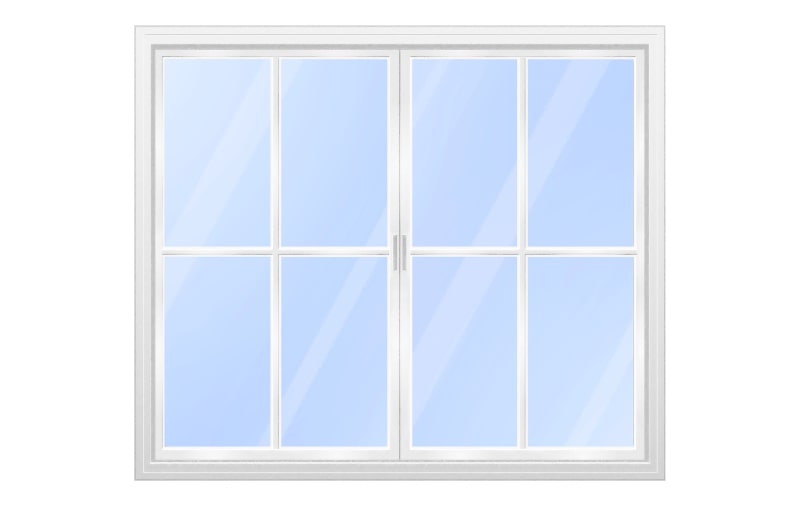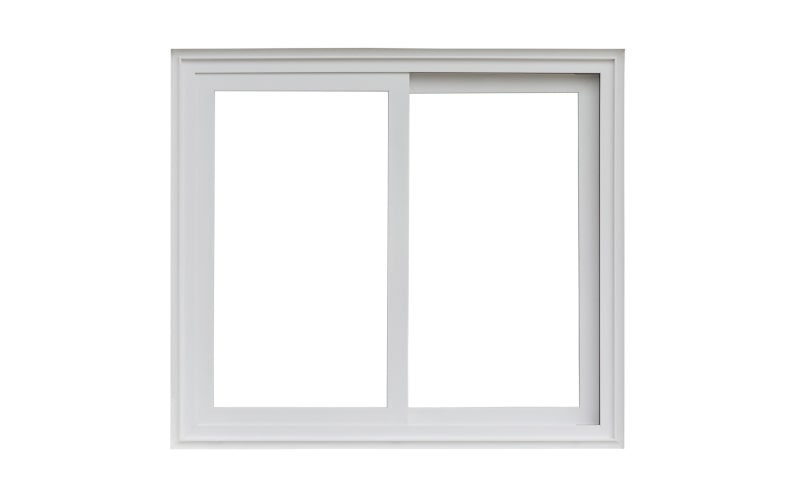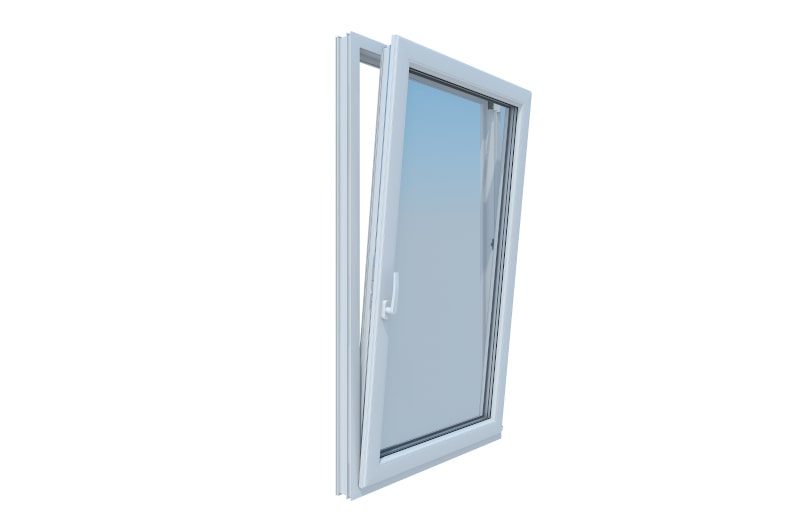Should You Open House Windows Every Day?

Key Takeaways
- Opening windows daily refreshes indoor air and reduces pollutants.
- Short ventilation bursts (5–15 minutes) are enough even during Canadian winters.
- Brilliant window selection improves airflow and energy efficiency.
- draftLOCK™ technology helps balance insulation and fresh-air circulation.
Why Fresh Air Matters for Canadian Homes
Clean indoor air makes your home more comfortable, supports your family’s health, and even boosts daily focus. Yet many Canadians overlook ventilation, especially during colder months.
According to the Canadian Mortgage and Housing Corporation (CMHC), indoor air can contain up to five times more pollutants than outdoor air. Dust, volatile organic compounds (VOCs), and excess moisture often build up in sealed homes.
Regular ventilation ensures your home feels lighter, cleaner, and more comfortable all year round.
The Benefits of Opening Your Windows Every Day
1. Better Indoor Air Quality
When windows remain closed, carbon dioxide and pollutants accumulate. Opening them allows clean outdoor air to dilute and replace stale air indoors, improving oxygen levels and reducing allergens.
2. Improved Mood and Focus
Fresh air naturally helps you feel more awake, focused, and refreshed. Studies show that well-ventilated homes help residents feel more relaxed and productive, especially for those working from home.
3. Odour and Moisture Control
Everyday activities — cooking, showering, or even cleaning — release odours and humidity. Ventilation helps regulate indoor humidity and quickly removes lingering smells.
4. Natural Energy Savings
Natural ventilation helps reduce the need for air-conditioning, keeping your home feeling fresh naturally. It’s a sustainable way to regulate temperature while reducing your household’s energy use.
Common Indoor Pollutants and How Ventilation Helps
| Indoor Pollutant | Typical Source | Main Concern | How Ventilation Helps |
|---|---|---|---|
| VOCs | Paints, cleaning products | Headaches, fatigue | Dilutes harmful compounds |
| Dust & Allergens | Pets, carpets, fabrics | Allergy symptoms | Flushes particles outdoors |
| CO₂ Build-up | Breathing in sealed rooms | Drowsiness, poor focus | Restores oxygen balance |
| Moisture | Cooking, showers | Mould, mildew | Dries air and reduces condensation |
Is It Okay to Leave the AC On While Windows Are Open?
Many homeowners wonder if they can run the air conditioner while airing out their home.
The answer depends on your region and comfort goals:
- In hot, humid climates, it’s best to avoid keeping both open. Your AC will overwork to maintain the temperature.
- In mild weather, briefly using both your AC and open windows can refresh your home without losing much efficiency.
- When humidity is high, rely on your AC’s dehumidification feature to control moisture after ventilation.
How Often Should You Ventilate Each Room?
Different areas of your home benefit from different ventilation patterns.
| Room | Recommended Frequency | Ideal Duration |
|---|---|---|
| Living Room | Once daily | 10–20 minutes |
| Kitchen | After cooking | 5–10 minutes |
| Bathroom | After showering | 5–10 minutes |
| Bedroom | Morning and night | 10–15 minutes |
Pro Tip : Cross-ventilation — opening windows on opposite sides of your home — is the fastest way to refresh air naturally.
Choosing the Right Windows for Ventilation
Fresh air circulation depends not only on how often you open your windows, but also on the
type and design of the windows
themselves.
Some window styles make it easier to enjoy natural airflow while keeping your home energy-smart and comfortable.
Below are the most effective window types for achieving balanced airflow in Canadian homes — each offering its own set of advantages.
Casement Windows

Casement windows
are hinged on one side and open outward like a door.
When fully opened, they capture side breezes and guide fresh air indoors — making them one of the most effective styles for natural ventilation.
Why homeowners choose them :
- Superior airflow: Casement windows open completely, allowing maximum ventilation in living rooms, kitchens, or any high-use area.
- Excellent seal: When closed, the sash presses tightly against the frame, providing exceptional insulation and protection against drafts.
- Ease of operation: A simple crank mechanism makes them easy to open, even in hard-to-reach places.
Best for : Main living areas, kitchens, and open-concept spaces that benefit from strong cross-breezes.
Casement windows are an excellent choice for homes in windy regions or near open fields. Their design captures the breeze efficiently while maintaining tight energy performance when closed.”
– Tony Wong, Project Manager at CCW
Sliding Windows

Sliding windows
open smoothly along a track, making them a practical, space-saving way to bring in fresh air.
While they don’t open as wide as casement models, they offer consistent airflow and are easy to operate.
Why homeowners choose them :
- Smooth operation: Ideal for rooms where swinging sashes could be obstructed by walkways or furniture.
- Low maintenance: With fewer moving parts, upkeep and cleaning are reduced.
- Balanced airflow: Two operable sashes (in double sliders) let you control air movement from both the top and bottom sections.
Best for : Basements, bedrooms, or smaller rooms where wall space is limited.
Awning Windows

Awning windows
are hinged at the top and open outward from the bottom, creating a small canopy-like effect.
This design allows ventilation even when it’s raining — a significant advantage in areas prone to frequent precipitation.
Why homeowners choose them :
- Weather-resistant ventilation: The outward-angled sash blocks rain while still allowing air in.
- Privacy and comfort: They can remain open slightly at night or during showers without compromising security or letting water in.
- Energy efficiency: Tight seals and compression locks reduce heat loss, making them suitable for Canada’s variable climate.
Best for : Bathrooms, kitchens, and upper-floor bedrooms.
Tilt-and-Turn Windows

Tilt-and-turn windows combine modern design with smart functionality that’s ideal for today’s Canadian homes.
They offer two opening modes: tilt the sash inward from the top for gentle ventilation, or turn it inward from the side for full airflow.
Why homeowners choose them :
- Flexible functionality: One window serves multiple ventilation needs — from a light air exchange to a full breeze.
- Enhanced safety: The tilt mode provides secure night ventilation without leaving your home exposed.
- Premium insulation: Multi-point locking systems ensure tight closure and superior thermal performance.
- Easy cleaning: The inward-opening design allows you to clean both sides of the glass from inside your home — ideal for upper floors or condos.
Best for : Bedrooms, modern homes, and energy-efficient upgrades in any climate.
Matching Ventilation Needs with Window Design
| Window Type | Ventilation Strength | Best Room Applications | Key Advantage |
|---|---|---|---|
| Casement | 5/5 | Living rooms, kitchens | Captures side breezes efficiently |
| Sliding | 4/5 | Basements, bedrooms | Space-saving and low maintenance |
| Awning | 4/5 | Bathrooms, upper floors | Allows ventilation during rain |
| Tilt-and-Turn | 5/5 | Bedrooms, modern homes | Dual operation and easy cleaning |
Energy Efficiency Meets Ventilation
Whichever window style you choose, look for energy-efficient materials and tight seals to keep your home balanced and comfortable all year.
Look for windows that feature:
- Low-E glass to reduce heat transfer and UV exposure.
- Argon gas fills for better thermal insulation.
- Multi-chambered vinyl frames for long-lasting durability.
- Precision-engineered seals that minimize drafts.
Together, these features help you enjoy fresh air when you need it — and warmth when you don’t.
That’s the balance Canadian Choice Windows & Doors delivers to homes from coast to coast.
What Happens If You Never Open Your Windows?
Poor ventilation can trap pollutants, moisture, and odours, creating a heavy, stale environment. Over time, excess humidity can cause condensation on glass, warped frames, and even mould growth.
Regular ventilation protects both your family’s well-being and the long-term performance of your windows.
Balancing Fresh Air and Energy Savings
You can enjoy fresh air every day without driving up your energy bills — it’s all about balance. Combine short daily airing with energy-efficient windows to achieve both freshness and efficiency.
Opening your windows for just 10 minutes can renew indoor air without significantly affecting indoor temperature — especially in well-insulated homes.
Helen Sin adds:
Many homeowners assume energy-efficient windows mean sealing everything shut — but that’s not true. The right windows give you control: fresh air when you want it, warmth when you need it.”
Build Healthier Habits for Better Living
Opening your windows daily is one of the simplest ways to improve your home’s comfort and your family’s well-being. Whether you live in a downtown condo or a detached house in the suburbs, clean air makes every space feel more alive.
With Canadian-made windows built for comfort and efficiency, you can enjoy lasting peace of mind — season after season.
Breathe easier with windows built for your home and climate.
Consult Canadian Choice Windows & Doors to discover the ideal windows that keep your air fresh and your home energy-efficient all year round.
FAQ About Window Ventilation
Should I open my windows at night?
Yes — during warmer months, night ventilation helps cool your home naturally and supports better sleep quality.
Should I keep windows closed in winter?
Keep openings short — 5 to 10 minutes of fresh-air exchange removes moisture without major heat loss.
Is it bad to open windows when it rains?
Avoid leaving them open unless you have awning windows, which shield against light rain.
What if I live near a busy road or have allergies?
Ventilate during early morning hours or use window filters to reduce dust and pollution.
How do modern windows prevent heat loss when ventilating?
High-efficiency windows, such as Canadian Choice Windows & Doors draftLOCK™ design, maintain a tight seal and insulative frame, keeping your home warm even with regular airflow.
Do I need to ventilate if I already use air purifiers?
Air purifiers help with dust and pollen, but can’t remove CO₂ or humidity. Natural ventilation remains essential.
1000’s of Colours & Textured Finishes
Transform your home from ordinary to extraordinary with our new coloured and non-glare textured finishes. Available in a wide array of colours as well as custom matched colours for your very own personalized design.
Our Most Popular Replacement Window Colours:









